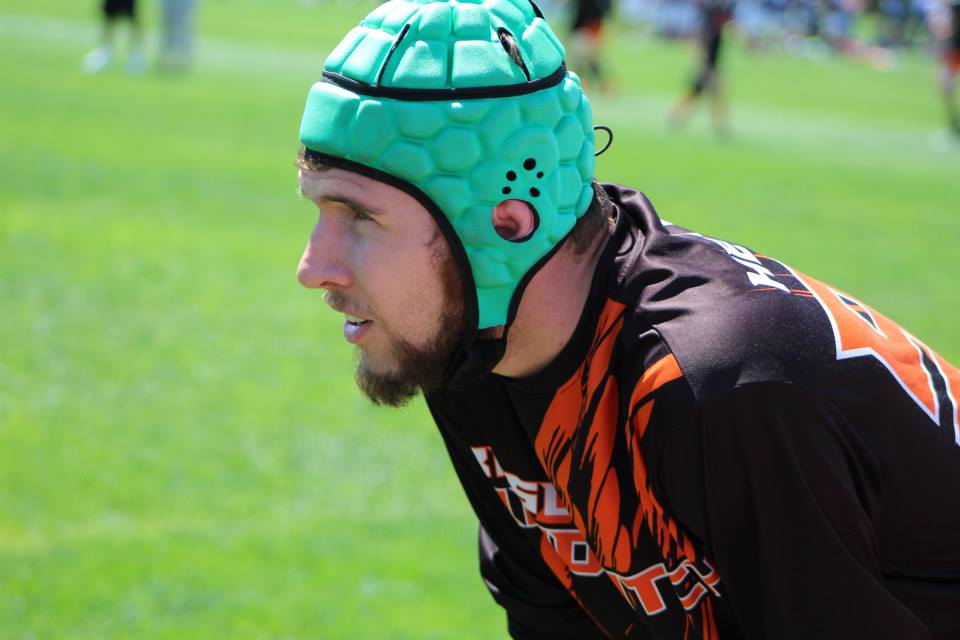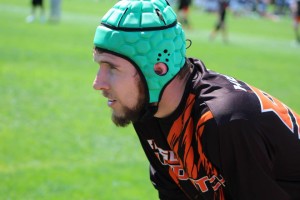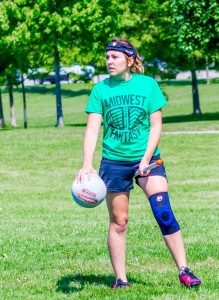By Sarah McGowan
MLQ’s first reported concussion occurred during this season’s opening series. I hear the person is fine, but any concussion should be taken seriously. As defined by the 4th International Conference on Concussion in Sport, a concussion “may be caused either by a direct blow to the head, face, neck or elsewhere on the body with an ‘impulsive’ force transmitted to the head.”
Concussions are commonly caused by a blunt force injury to the head, neck or upper body and can cause the sensitive brain tissue to impact the surrounding bone and cause neurological damage. Concussions typically result in the rapid onset of short-lived impairment of neurological function that resolves spontaneously. However, symptoms may show up hours after the event. Many athletes can be misdiagnosed, return to play and suffer from a secondary concussion. This puts the player at risk for more intense and sustained brain damage. Numerous seasoned quidditch players have mentioned suffering multiple concussions during their quidditch careers.
As MLQ’s Player and Safety Advisor Adam Elwood stated, “It is important to compare the player to their own baseline behavior to determine if there is a difference. Immediate symptoms may disappear after a brief period, but it is still important to detect symptoms before returning an athlete to play.” Common symptoms include but are not limited to headaches, depression, behavioral changes, cognitive impairment and the more obvious passing out. Post-concussion symptoms may appear one week to one year after the initial injury. They are also similar to concussion symptoms but linger for a longer period of time. If there is ever any doubt as to the player’s condition by the player, coach, captain, manager or medical professional, they must be removed from play to recover. For any player who is not allowed to return to play, they should not be left alone following the injury and serial monitoring for deterioration is essential over the initial few hours after the potential concussion occurred. Once they are cleared, the player should return to physical and mental activity slowly while being monitored by a medical professional.
As we are seeing with the NFL, multiple concussions can not only affect a person’s cognitive abilities in the short term, but many years later in life as well. This progressive degenerative disease of the brain found in athletes (and others) with a history of repetitive brain trauma, including symptomatic concussions as well as asymptomatic subconcussive hits to the head is called chronic traumatic encephalopathy. A recent example is former UNC Lineman Ryan Hoffman, who was a college football star in the ’90s but now roams the streets of Lakeland, Florida. Suffering from multiple concussions increases the likelihood of developing this condition. It is the intention of MLQ to prevent such injuries, and if they occur, ensure that proper steps are followed in order to allow players to fully recover.
I was told in one of my college courses, “coaches are crazy and players lie.” Players often downplay symptoms in order to continue practicing and playing. I cannot stress enough how important it is to take concussion symptoms and concussions seriously. As a player, I sympathize with injured players and wanting to get back on the pitch, but if you want to minimize future problems as much as possible, it is best to be honest with yourself and your doctor about concussion symptoms you may be experiencing. Sustaining multiple concussions in a short period of time can lead to severe neurological problems later in life, or even death. For the league’s full approach to concussions please read our Player Safety Policy provided on the Major League Quidditch Gameplay page.
Headbands and protective headgear can be purchased online. Many players use rugby scrum caps, but headbands are popping up too. Two companies that make concussion headbands are Unequal Technologies and Full 90. The Halo Headgear from Unequal Technologies comes in a 6mm and 10mm and you can get a green or black in the 6mm but only black in the 10mm. Most people have seen the Full 90 headbands on the pitch and those only come in black.
CITATIONS




What are the procedures for Quidditch players to report injuries? I know of other diagnosed and treated concussions that have occurred in the past year, which is the only year that I have been aware of the sport. I love the sport and want to see it continue to grow, but I believe that something needs to change to ensure the sport’s growth (and even continuance) – either required protective equipment or changes in tackling procedures and penalties for play causing injuries.